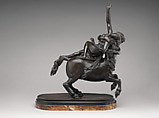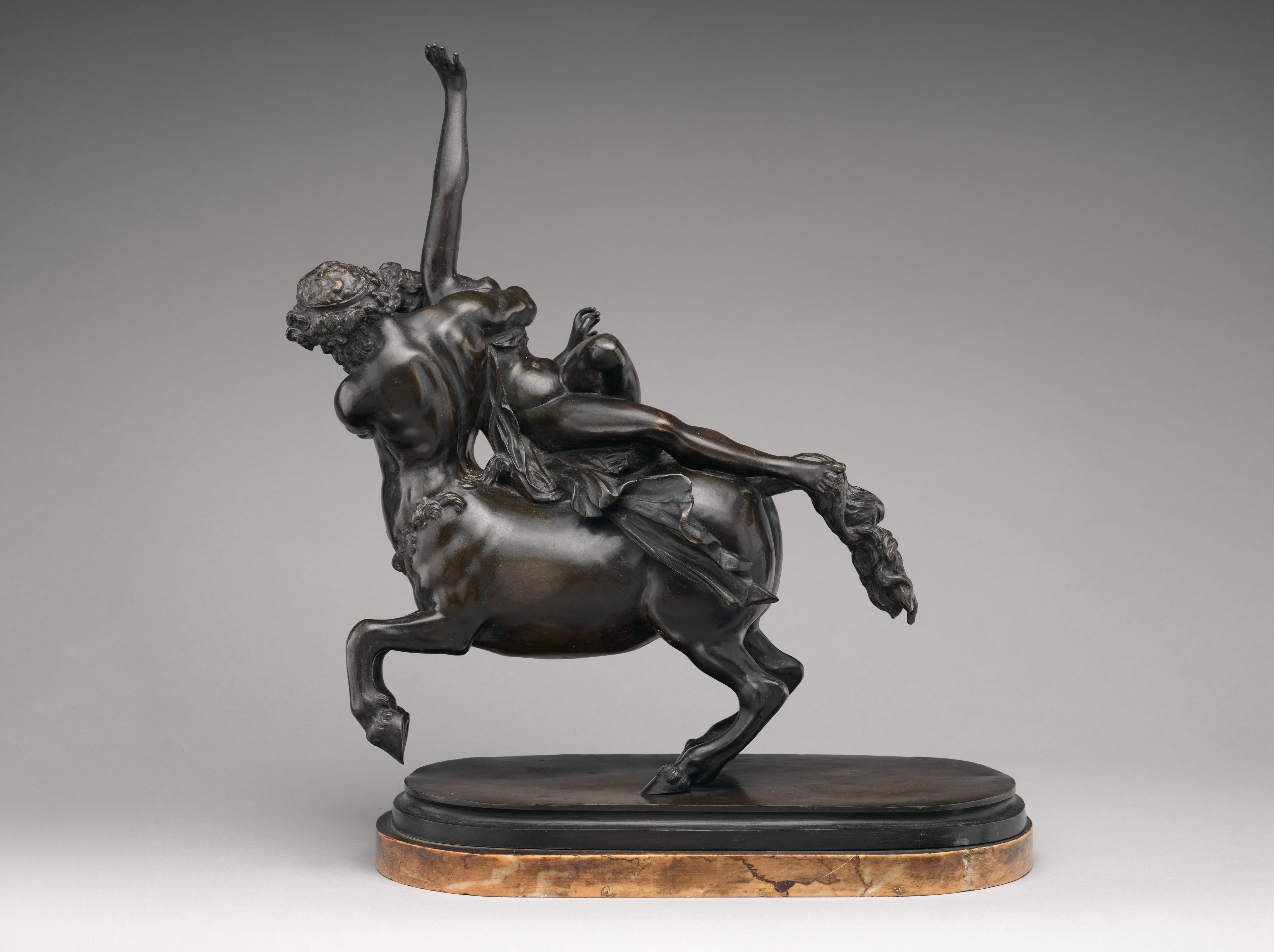Nessus and Dejanira
After a model by Giambologna Netherlandish
Not on view
This group is a replica of Giambologna’s most famous version of his composition Nessus Abducting Dejanira. Three distinct types produced after his 1577 model have been categorized. Our bronze is a late, reduced variant of Type A.[1] In this type, Dejanira, arms flung out, stretches along the centaur’s back, his right arm forcibly wrapped around her upper body, his left hand cinching the drapery tightly across her torso. The lower part of the drapery flies out on Nessus’s proper right. Type A examples are usually around 42 cm in height.
With the exception of Dejanira’s arms and the base, our group appears to have been well cast in one piece. The patina is brown and fairly opaque, the chasing minimal. The bronze base is unusually long to compensate for the statuette’s weight. Nothing about the group’s formal characteristics suggests that it is a product of Giambologna’s workshop or that of his followers, or even an early modern cast. In his analysis of its facture, Richard Stone bluntly concludes: “this bronze is a good example of a cleverly deceptive Giambologna forgery of rather recent date.”[2] His conclusion is based on, first, radiographs that reveal a system of core support without precedent in the Giambologna tradition. Second, Dejanira’s arms were joined using threaded holes created with modern twist drills, which places the statuette no earlier than the mid-nineteenth century. Third, the alloy is a brass with a minor amount of lead and tin; trace elements that would normally be present in a Renaissance bronze—nickel, arsenic, silver, antimony—are low or undetectable. The purity of the metal is thus consonant with a late modern vintage.
-FL
Footnotes
(For key to shortened references see bibliography in Allen, Italian Renaissance and Baroque Bronzes in The Metropolitan Museum of Art. NY: The Metropolitan Museum of Art, 2022.)
1. C. Avery and Radcliff 1978, pp. 109–12. Three examples of Type A are ascribed to Giambologna: cats. 60 (Louvre), 61 (Staatliche Kunstsammlungen, Skulpturesammlung, Dresden), and another in the Huntington, San Marino, California. Further examples of Type A are cats. 62–66 (Kunsthistorisches Museum; Nationalmuseum, Stockholm; Musée Municipale de la Chartreuse, Douai). See also Paolozzi Strozzi and Zikos 2006, pp. 170–71, cats. 6, 7.
2. R. Stone/TR, March 31, 2011.
Due to rights restrictions, this image cannot be enlarged, viewed at full screen, or downloaded.
This artwork is meant to be viewed from right to left. Scroll left to view more.



